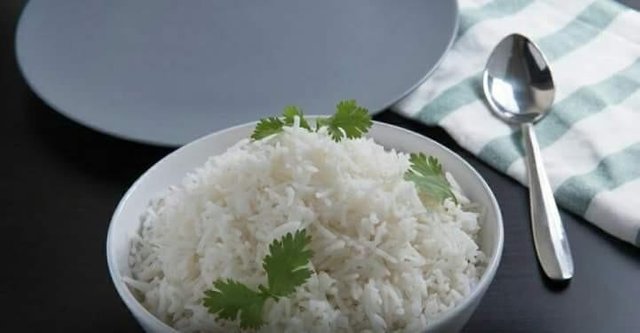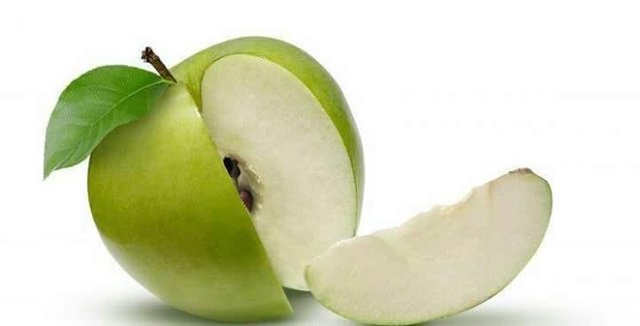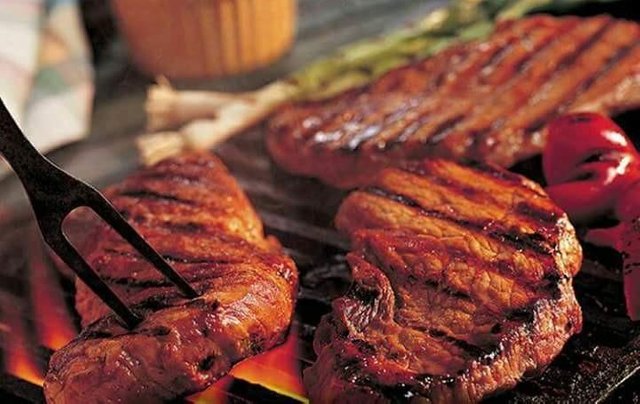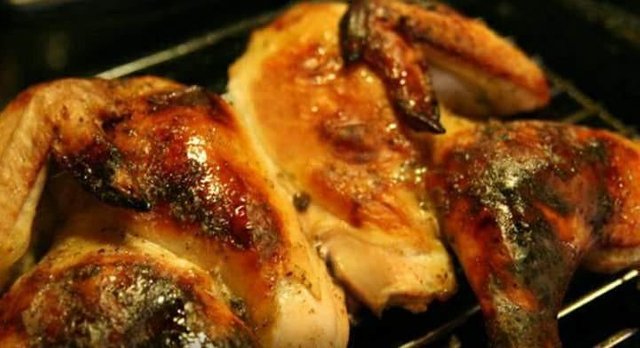Cooking with Chemistry: How to make your food better and healthier with simple chemical reactions ?!
Does the title seem strange? Im sure you ask yourself now, is there any relations between chemistry and cooking?"
In fact, cooking involves almost everything with chemistry! For example, ask any skillful baker about that specific part and tell you that everything he does depends on the chemistry, from pH levels to enzymes and heat properties. Only you need to get the right formula, and then you can keep your food longer, improve the quality of your meat, or even reduce the amount of calories you consume while maintaining the amount and type of food you prefer! Is this the magic article of slimming that I have long waited for? Maybe!
Let's look at some amazing chemical cooking tips and hints from the American Chemical Society as we learn how chemistry can work for us at the dining table!
Reduce the calorie value of rice by half!

Reduce the calorie value of rice by half
For most of us, rice is a main dish in the main meal during the day; and for myself, the food that does not contain rice is not food! Of course, this is a personal preference that most of us have used and accustomed to, even though it has many disadvantages.
The rice is very rich in starch, if you want my opinion about a very harmful experience of our bodies! In fact, one cup of cooked rice gives us the equivalent of 240 calories, which will later turn into fat accumulating in your buttocks and abdominal area if those calories are not burned quickly! But the researchers found a simple way to modify the properties of starch contained in rice and make it resistant to breakage and degradation to glucose.
What you will need first is to add a small amount of coconut oil to the cooking water of the rice while boil, equivalent to about 3% of the weight of the rice to be added to the water or about a teaspoonful of each half cup of rice. Then add the rice, reduce the operator slowly and leave it on fire for 8 to 10 minutes.
After maturing rice as you like, you'll need to put it in the fridge for 12 hours! Do not joke here! I know it's not the traditional way of cooking, but do you want to achieve your goal of all this or not ?! Do not interrupt me again please!
After 12 hours as mentioned in the radiator, you can heat the rice for the time we like in the microwave or traditional heating (do not add oil or poison, of course!). And the healing and healing! You have a rice dish with almost the same taste, but with calories 50 to 60% less!
What is the role of chemistry here?
There is starch in rice in various forms, including digestible, including indestructible. The starch that can be digested quickly changes as we said to glucose and is stored in the body as fat if we do not do something to burn it. Let us of non-digestible starch is peaceful and does not hurt nor break down to glucose
Here comes the role of coconut oil that interacts with starch molecules and changes the chemical structure of them! The cooling then comes for 12 hours, leading to the formation of hydrogen bonds between a starch component called amylose, which leads to the transformation of the digestible starch into an indigestible starch.
Keep sliced fruit from discoloration

I have noticed that some fruits, such as apples, are exposed to the leaves, leaving them in the air, and I have probably heard the advice of adding lemon juice on the sliced slices so as not to stick. But what if you do not like the taste of apple tartar after applying this useful advice? We can overcome this with some chemistry of course!
What is the role of chemistry here?
The reason for the change in the color of the cut fruit is in fact the polyphenol oxidase, which starts with the reaction of the fruit with the air or rather with the oxygen in the air, and the best way to inhibit its work is by adding vitamin C or what is known as acid Ascorbic acid Ascorbic Acid, The least slows down this reaction. Because it takes place at the chemical level of the material, there is no need to change the taste of fruit by dumping it in the taste of lemon acid and enough to use juice diluted with water.
Chicken and meat with a saucer enriched with sodium bicarbonate

Baking Soda is a powder known to every baker or housewife. It is commonly used in baking cakes and pastries to raise the dough and help it swell when exposed to heat. Soda bake consists of sodium bicarbonate only NaHCO3, but its secret lies in its interactions with other materials. Sodium bicarbonate remains just a powder until it reacts. In bread, for example, it produces carbon dioxide when it is reactivated, which expands to produce the known dough. But as we shall see later, baking soda is another magical interaction with meat or animal proteins.
You may not know this by virtue of your distance from the kitchens, but the essential part of cooking meat, whether red or white, can be in two things: the first to be fresh, not frozen, and the second to soak and season before long enough. So, the meat becomes rich in the juice that dissolves in your mouth tastefully takes your mind. Such a soak and seasoning may take hours before it may take some recipes to a full day before cooking! But if you are using frozen meat or you are in a hurry and you want to have a good fresh taste, unlike the solid meat you used to prepare, you should have baking soda or sodium bicarbonate as we know it!
What we will do here is to spray the meat that we would like to cook in our usual way with sodium bicarbonate and mix it well in a deep bowl, then cover it with transparent nylon and leave it for only 15 minutes. Then wash the meat well under running water to remove the effects of sodium bicarbonate, and start cooking or grilling meat in the way you prefer but you will surprise the amazing taste of the meat!
What is the role of chemistry here?
What happens here is that the more lean the meat is due to storage or freezing in your refrigerator for long periods, the pH levels are very low. PH is the pH of any substance. Fluids have a pH of less than 7, while fluids have a pH greater than 7 alkali. The water is pH 7 so it is a neutral liquid that can be taken without causing any burns or damage. In fact, we use it to neutralize the acidity of our edges, which gives us a sense of balance and does not give us other fluids!

We go back to the low pH of the non-fresh frozen meat. This low pH is the reason for the stiffness of the meat and the lack of its juice as it directly affects the flesh. Here comes the role of sodium bicarbonate!
Sodium bicarbonate has a high pH of pH 9, and when we cover the meat for some time, it raises the pH levels of the meat in turn, increasing the ability of the meat to retain water and gravy. So, instead of losing the meat for water on the grill or in the pan, the chicken or beef will retain its appetite and remain soft!
PS : follow me for more precious and new actualities
Congratulations @leo1990! You have completed some achievement on Steemit and have been rewarded with new badge(s) :
Click on any badge to view your own Board of Honor on SteemitBoard.
For more information about SteemitBoard, click here
If you no longer want to receive notifications, reply to this comment with the word
STOPThe only reason for time is so that everything doesn't happen at once.
- Albert Einstein